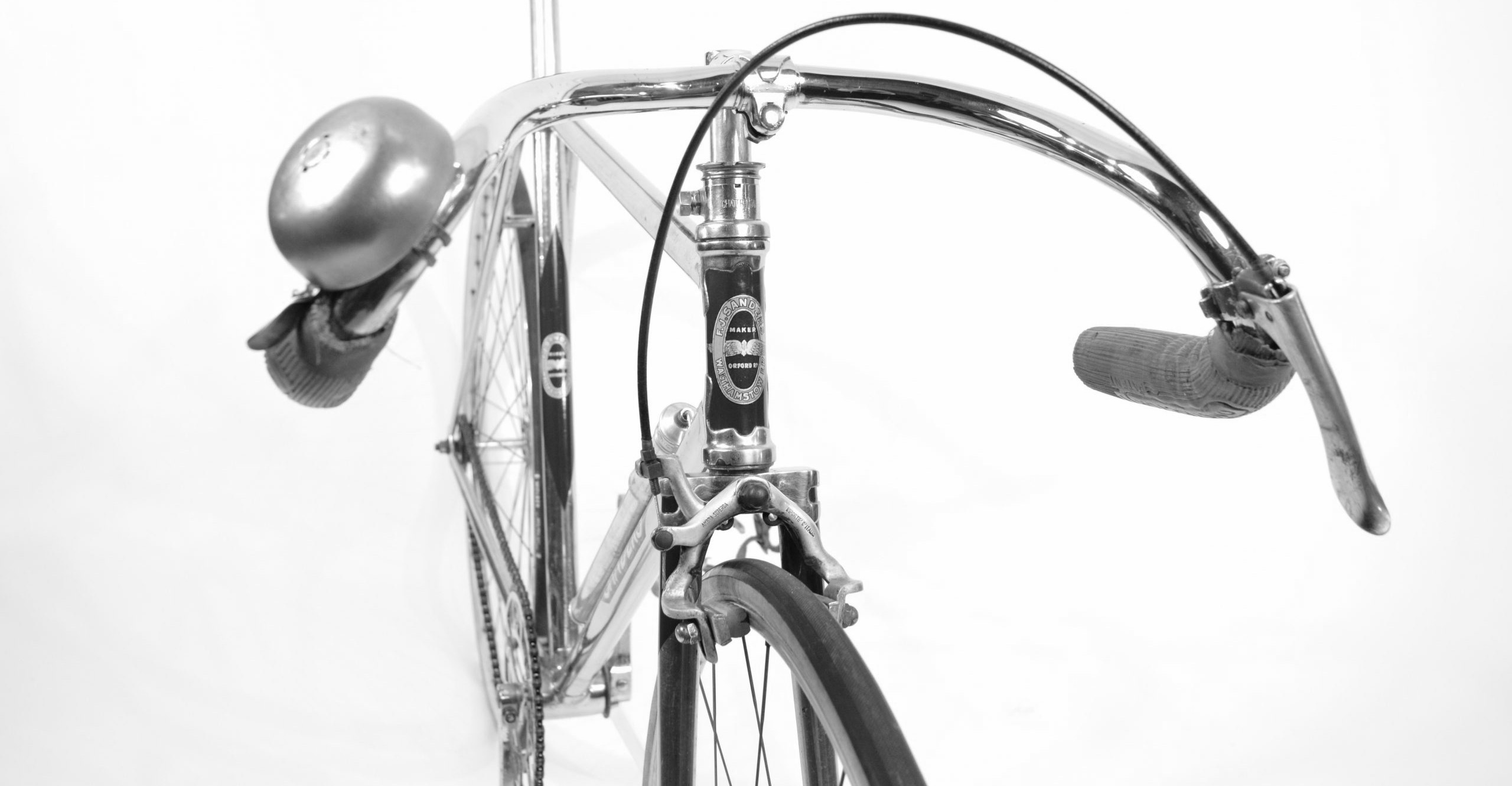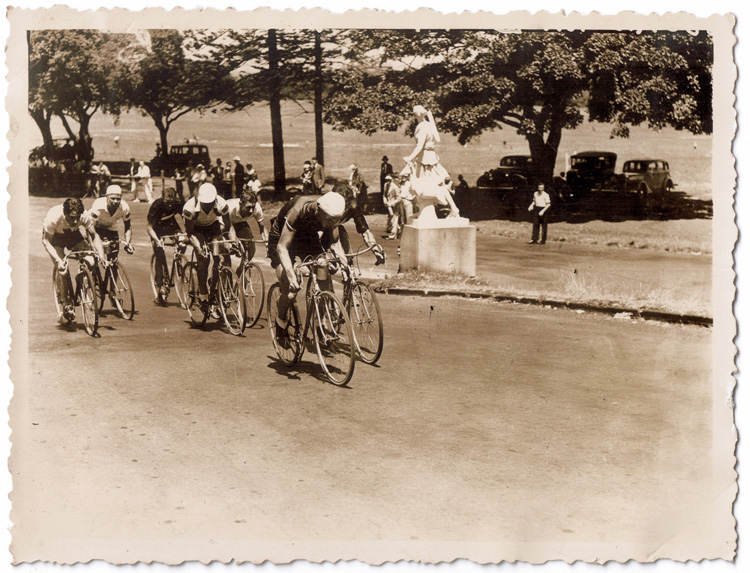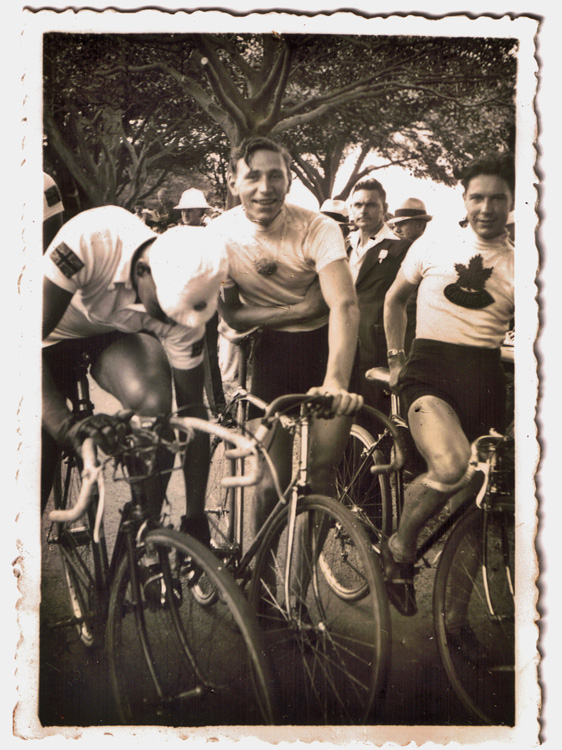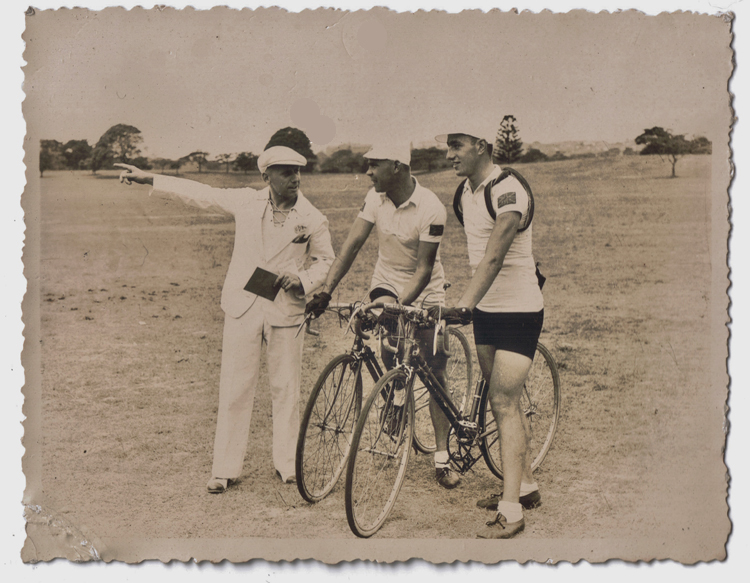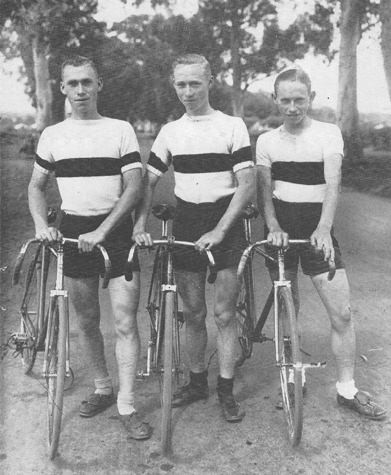British Empire Games 1938, Sidney Australia - Cycling
Posted: Sunday 16th August 2020
I have just come across some photos that could be of interest, they are from the 1938 Empire Games, held in Sydney, Australia.
I am not sure who is who, but I am sure some of your readers can fill in the blanks, as far as the English riders go. Of interest is the middle photo of the start of the race, the UK rider on the left appears to be using a Sturmey Archer racing hub with SA wing nuts and quick-release cable. I would hazard a guess that this would have to be one of the last times a SA hub would have been used at this level of International road racing? Several riders are using the Osgear derailleur gear.
Ed: I guess one of the riders is Ray Jones who won a Bronze in the road race.
Additional factfile on the 1938 British Empire Games Road Race by Geoff Waters
- 1938 was the first time that a road race had been included in the British Empire Games. This was in addition to the three established track events: match sprint; 1,000 metre individual TT; 10 mile scratch race.
- The 1938 Games road race took the form of a ‘mass-start’ en ligne event. Such events were a rarity in both Britain and the colonies at the time, where individual time trialling over fixed distances (10, 25, 50 and 100-miles) and times (12 and 24-hours) were the traditional form of road sport.
- The introduction of the mass-start format at Sydney brought the Empire Games into line with the Olympic Games road race and the UCI annual world amateur road championship of that era and hence into cycling’s modern age. It was, therefore, a revolutionary step.
- The Sydney Empire Games road title event was held over a distance of 100km (62.14 miles) in a local park.
- The race took the form of 15 laps of a 6.6km (4.14 mile) circuit which included a series of short, strength-sapping sharp climbs and three tight corners.
- It was a South African, Hennie Binneman, who emerged as the winner in a time of 2hrs 53 mins 29.6secs (Average speed: 34.7kph; 21.6mph).
- Binneman triumphed in a four-man final sprint, beating the New Zealander, John Brown (silver medallist) and the Englishman, Ray Jones (bronze medallist). All three were given the same time.
- Binneman was one of two South Africans who started in the road event, the other being Sid Rose. Both came from Cape Town, which was a hotbed of the sport at the time.
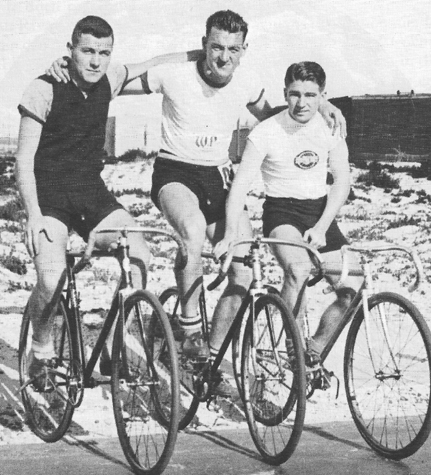
- Both Binneman and Rose had contested track events at the Games. In the 1,000 metre individual TT (won by R. Porter of Australia in 1:15.2), Rose finished 11th and Binneman 13th. Rose then took the bronze medal in the 10 mile scratch race, in which the gold medal was won by W. Maxfield (England) and the silver medal by R. Hicks also of England.
In the Sydney road race, Binneman was prominent throughout, leading the field over the finishing line on no fewer than six of the 15 laps, including the 11th and 13th. Rose rode strongly in the group but on the penultimate lap he unshipped his chain and was dropped, leaving Binneman without the potential benefit of his support. Binneman still triumphed in the final sprint. - After the conclusion of the Sydney Games, Binneman and Rose returned to South Africa by ship with the rest of the 1938 South African Empire Games team. The team had been away from home for several months.
- Hennie Binneman was employed as a signwriter. However, he found on returning home to Cape Town from the Games that his employer had tired of waiting for him and he no longer had a job.
- Tom Nimmo, the owner of ‘Nimmo’s Cycles’, Cape Town’s leading lightweight specialist at the time, was sympathetic. He appointed Binneman to manage a branch of Nimmo’s Cycles in the city’s white working class suburb of Bellville where Binneman himself lived.
- In the September 1957 issue of that incomparable magazine, Coureur: Sporting Cyclist, an advert for Viking Cycles carried a press clipping from the Cape Argus newspaper (see below). This was of a Nimmo’s Cycles advert listing local successes on Viking machines. Under the entry for the Nimmo’s Cycles branch in Bellville, it states:
Manager: Henri Binneman, Ex-British Empire Cycle Road Champion
This was nearly 20 years after Binneman had won the road title at the 1938 Sydney British Empire Games.
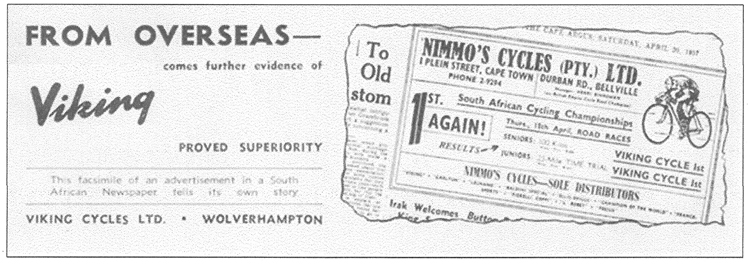
References
Human, E. (1984), die Paarl se Boxing Day Sports, Cape Town: San Uitgewers.
Jowett, W. (1982), Centenary: 100 years of Organised South African Cycle Racing, SACF.
Posted: Sunday 16th August 2020
This article appears in the following categories.
Upcoming Events
Whether you are looking for a gentle social meet up, or a 100-mile ride browse the community’s upcoming events and plan your next weekend outing.
